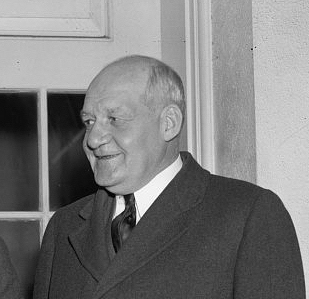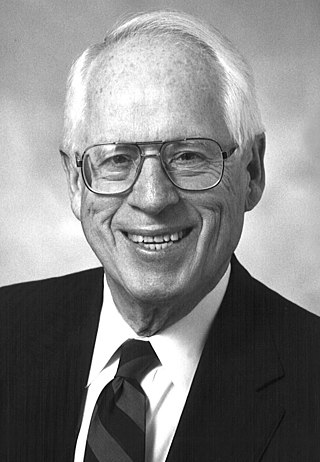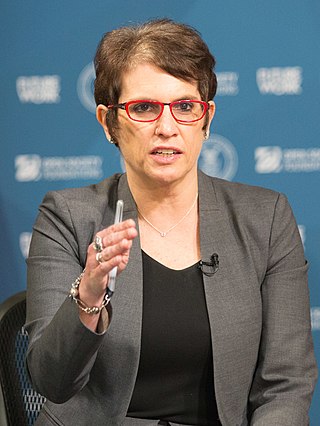
The National Labor Relations Act of 1935,also known as the Wagner Act,is a foundational statute of United States labor law that guarantees the right of private sector employees to organize into trade unions,engage in collective bargaining,and take collective action such as strikes. Central to the act was a ban on company unions. The act was written by Senator Robert F. Wagner,passed by the 74th United States Congress,and signed into law by President Franklin D. Roosevelt.

The National Labor Relations Board (NLRB) is an independent agency of the federal government of the United States that enforces U.S. labor law in relation to collective bargaining and unfair labor practices. Under the National Labor Relations Act of 1935,the NLRB has the authority to supervise elections for labor union representation and to investigate and remedy unfair labor practices. Unfair labor practices may involve union-related situations or instances of protected concerted activity.

United States labor law sets the rights and duties for employees,labor unions,and employers in the US. Labor law's basic aim is to remedy the "inequality of bargaining power" between employees and employers,especially employers "organized in the corporate or other forms of ownership association". Over the 20th century,federal law created minimum social and economic rights,and encouraged state laws to go beyond the minimum to favor employees. The Fair Labor Standards Act of 1938 requires a federal minimum wage,currently $7.25 but higher in 29 states and D.C.,and discourages working weeks over 40 hours through time-and-a-half overtime pay. There are no federal laws,and few state laws,requiring paid holidays or paid family leave. The Family and Medical Leave Act of 1993 creates a limited right to 12 weeks of unpaid leave in larger employers. There is no automatic right to an occupational pension beyond federally guaranteed Social Security,but the Employee Retirement Income Security Act of 1974 requires standards of prudent management and good governance if employers agree to provide pensions,health plans or other benefits. The Occupational Safety and Health Act of 1970 requires employees have a safe system of work.

Union busting is a range of activities undertaken to disrupt or weaken the power of trade unions or their attempts to grow their membership in a workplace.
The Public Employees Fair Employment Act,more commonly known as the Taylor Law,is Article 14 of the state Civil Service Law,which defines the rights and limitations of unions for public employees in New York.
The Employee Free Choice Act is the name for several legislative bills on US labor law which have been proposed and sometimes introduced into one or both chambers of the U.S. Congress.
A whipsaw strike is a strike by a trade union against only one or a few employers in an industry or a multi-employer association at a time. The strike is often of a short duration,and usually recurs during the labor dispute or contract negotiations—hence the name "whipsaw".
NLRB v. Truck Drivers Local 449,353 U.S. 87 (1957),is an 8-0 decision by the Supreme Court of the United States in which the Court held that a temporary lockout by a multi-employer bargaining group threatened by a whipsaw strike was lawful under the National Labor Relations Act (NLRA),as amended by the Taft-Hartley Act.
NLRB v. Mackay Radio &Telegraph Co.,304 U.S. 333 (1938),is a United States labor law case of the Supreme Court of the United States which held that workers who strike remain employees for the purposes of the National Labor Relations Act (NLRA). The Court granted the relief sought by the National Labor Relations Board,which sought to have the workers reinstated by the employer. However,the decision is much better known today for its obiter dicta in which the Court said that an employer may hire strikebreakers and is not bound to discharge any of them if or when the strike ends.

The history of union busting in the United States dates back to the Industrial Revolution in the 19th century. The Industrial Revolution produced a rapid expansion in factories and manufacturing capabilities. As workers moved from farms to factories,mines and other hard labor,they faced harsh working conditions such as long hours,low pay and health risks. Children and women worked in factories and generally received lower pay than men. The government did little to limit these conditions. Labor movements in the industrialized world developed and lobbied for better rights and safer conditions. Shaped by wars,depressions,government policies,judicial rulings,and global competition,the early years of the battleground between unions and management were adversarial and often identified with aggressive hostility. Contemporary opposition to trade unions known as union busting started in the 1940s,and continues to present challenges to the labor movement. Union busting is a term used by labor organizations and trade unions to describe the activities that may be undertaken by employers,their proxies,workers and in certain instances states and governments usually triggered by events such as picketing,card check,worker organizing,and strike actions. Labor legislation has changed the nature of union busting,as well as the organizing tactics that labor organizations commonly use.

Joseph Warren Madden was an American lawyer,judge,civil servant,and educator. He served as a judge of the United States Court of Claims and was the first Chairman of the National Labor Relations Board. He received the Medal of Freedom in 1947.

Wilma B. Liebman is an American lawyer and civil servant who is best known for serving as a member of the National Labor Relations Board (NLRB). She was designated chair of the board by President Barack Obama on January 20,2009,becoming only the second woman to lead the NLRB.

Harry Alvin Millis was an American civil servant,economist,and educator and who was prominent in the first four decades of the 20th century. He was a prominent educator,and his writings on labor relations were described at his death by several prominent economists as "landmarks". Millis is best known for serving on the "first" National Labor Relations Board,an executive-branch agency which had no statutory authority. He was also the second chairman of the "second" National Labor Relations Board,where he initiated a number of procedural improvements and helped stabilize the Board's enforcement of American labor law.

John Cushman Truesdale Jr. was an American lawyer and civil servant who served two terms as executive secretary of the National Labor Relations Board,four terms as a board member,and one term as board chair.
Guy Otto Farmer was an American lawyer and civil servant. He was Chairman of the United States National Labor Relations Board from July 1953 to August 1955. After leaving government service,he represented the Bituminous Coal Operators Association,the collective bargaining arm of the bituminous coal mining industry in the United States.

William Emanuel is an American lawyer and government official who formerly served as a member of the National Labor Relations Board. Prior to assuming that role,he was a shareholder at the law firm Littler Mendelson.

John F. Ring is a corporate lawyer and a former United States government official. He was a member of the National Labor Relations Board from 2018 to 2022,and was its chair from 2018 to 2021. He was formerly co-chair of the labor and employment law practice at Morgan,Lewis &Bockius,a pro-management law firm,where his practice included representing employers in collective bargaining,labor contracts,multi-employer benefit funds and corporate restructurings.

Sharon Block is an American attorney,government official,labor policy advisor and law professor who served during the Biden administration as the Associate Administrator delegated the duties of the Administrator of the Office of Information and Regulatory Affairs from January 20,2021,to February 1,2022. During the Obama administration,Block served on the National Labor Relations Board and in the United States Department of Labor and the White House. She currently serves as a professor of practice and the executive director of the Labor and Worklife Program at Harvard Law School.

Lauren McFerran is an American lawyer and government official who served as a member and chairman of the National Labor Relations Board. Prior to serving on the board,she worked as a law clerk,in private practice,and as a labor lawyer for the Senate Committee on Health,Education,Labor,and Pensions.
A captive audience meeting is a mandatory meeting during working hours,organized by an employer with the purpose of discouraging employees from organizing or joining a labor union. It is considered a union-busting tactic. Critics allege that captive audience meetings are used to intimidate workers and spread misinformation;employees can be fired for failing to participate in the meeting or for asking questions. Prior to November 2024,in the United States,the National Labor Relations Act of 1935 (NLRA) broadly permitted captive audience meetings but did not allow them to be held in the final 24 hours prior to a union election. Employers defended the practice as protected free speech;critics viewed the practice as an infringement on workers' rights not to listen.












